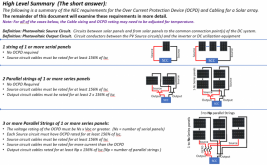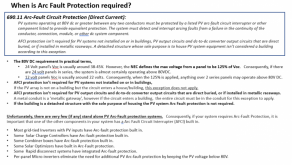Acho_303
New Member
- Joined
- Nov 26, 2020
- Messages
- 220
I have 4 100watt renogy solar panels on my roof and have been using them without a breaker box between the panels and the charge controller. I recently saw a few people installing breaker boxes between the panels and the charge controller. Does anyone know what size 2 pole breaker I should get?
I saw one say you should get your chargers amps, my victon is a 100/50, so a 50 amp breaker? I saw another say you should size it to your panels, so 5.29x4 equals 21.16... another argument was sourcing 20amp breaker would trip and sourcing over was asinine....
What does everyone think?
I saw one say you should get your chargers amps, my victon is a 100/50, so a 50 amp breaker? I saw another say you should size it to your panels, so 5.29x4 equals 21.16... another argument was sourcing 20amp breaker would trip and sourcing over was asinine....
What does everyone think?




